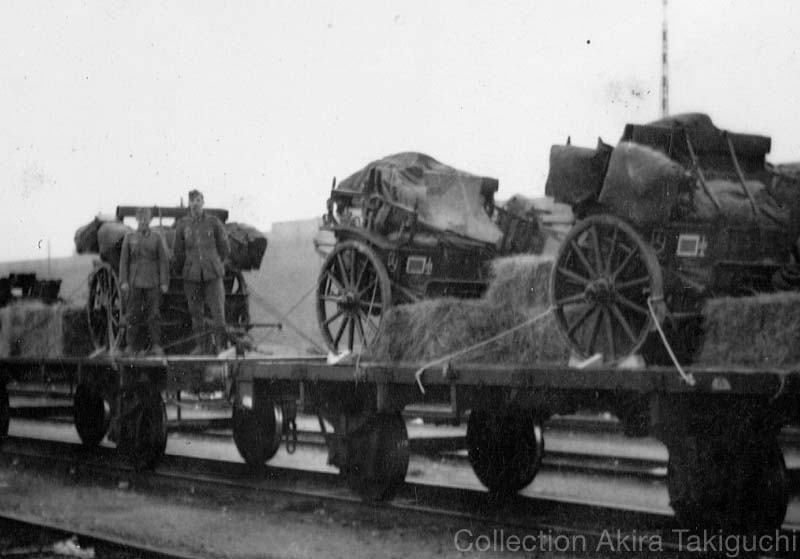Click the image for a larger scan

February has been an extremely busy month for me, so here's a far-from-finished article. Suggestions are welcome.
After the first major counterattack by the Soviets in winter 1941,Demjansk in Waldai heights was the key city for the Wehrmacht to reinitiate attack to the Soviet Union. Thus this city must have been defended by any means. Two attacking pincers of red army surrounded the city, cutting off the encircled troop from the rest. The battle of Bollwerk(Fortress) Demjansk began!
Infanterie-Regiment 376 of 225. Infanterie-Division from Hamburg was one of the troops that were trapped in the encirclement. The regiment started its journey into the Russia in 1941. The regiment is being loaded onto a train as seen in this picture - three limbers for towing 75mm light infantry gun (or 150mm sIG - not MG cargo as I wrote earlier, thank you for keeping me straight, Bob). The Kennzeichen of the division, stalking soldier is vaguely seen on the cargo. The regiment reached Narwa, then encircled in Demjansk.
A scene on Waldai heights in winter 1941 - a soldier is watching the front line using scissors scope. In early summer, soldiers are seen in front of a strong point "M-III". A view from inside the M-III. To get better protection from russians, the troop had to cut down many trees around the strongpoints. After the successful bridging operation, the Bollwerk Demjansk was linked to the german lines. Again the winter came, and here is a picture of river Pola.
Timely and sufficient supply was the key to save this fortress from Soviet forces. Here in Demjansk, Luftwaffe did it well enough with their aircrafts just to lead the great disaster in Stalingrad several months later. The Demjansk airport seen from the above. Like everywhere else where Luftwaffe Transportgeschwader actively participated, Ju52 - Tante kept the operation running in full wing. Many Ju's ended their lives here in Demjansk as victims of Flaks, fighters and artillery barrage. Still, to keep this fortress in german hands, many sorties flew low to the Demjansk airport with soldiers, ammunition and other indispensable supplies. These photographs are from an album of a transport pilot who flew many missions in Greece, Africa and Russia.